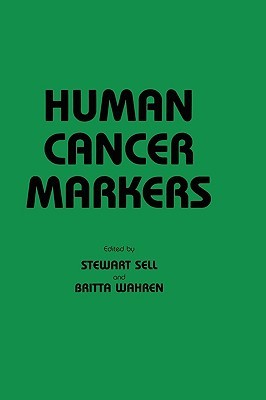
- We will send in 10–14 business days.
- Publisher: Humana
- ISBN-10: 0896030296
- ISBN-13: 9780896030299
- Format: 15.6 x 23.4 x 2.5 cm, kieti viršeliai
- Language: English
- SAVE -10% with code: EXTRA
Human Cancer Markers (e-book) (used book) | bookbook.eu
Reviews
Description
The ability to diagnose cancer by simple measurement of a serum or tissue' 'marker" has been a goal of medical science for many years. There is ample evidence that tumor cells are different from normal cells and pro- duce substances that can be detected by currently available immuno- chemical or biochemical methods. These "cancer markers" may be se- creted proteins, enzymes, hormones, fetal serum components, monoclonal immunoglobulins, cell surface components, or cytoplasmic constituents. The purpose of this book is to present the current status of our knowledge of such cancer markers. The first tumor marker identified by laboratory means was Bence- Jones protein. In a series of lectures delivered to the Royal College of Phy- sicians in London in 1846, Dr. H. Bence Jones described studies on a urine sample sent to him with the following note: "Dear Dr. Jones-The tube contains urine of very high specific gravity. When boiled it becomes slightly opaque . . . . etc. " Dr. Jones found that heating of the urine after addition of nitric acid resulted in formation of a heavy precipitate; acid ad- dition may have been required to bring the urine to pH 4-6 at which Bence Jones proteins are more likely to precipitate when heated. This urinary pre- cipitate was associated with a bone disease termed "mollities ossium. " [H. Bence Jones, Papers on Chemical Pathology, Lecture III. Lancet 2, 269-274 (1847)].
EXTRA 10 % discount with code: EXTRA
The promotion ends in 22d.09:26:03
The discount code is valid when purchasing from 10 €. Discounts do not stack.
- Publisher: Humana
- ISBN-10: 0896030296
- ISBN-13: 9780896030299
- Format: 15.6 x 23.4 x 2.5 cm, kieti viršeliai
- Language: English English
The ability to diagnose cancer by simple measurement of a serum or tissue' 'marker" has been a goal of medical science for many years. There is ample evidence that tumor cells are different from normal cells and pro- duce substances that can be detected by currently available immuno- chemical or biochemical methods. These "cancer markers" may be se- creted proteins, enzymes, hormones, fetal serum components, monoclonal immunoglobulins, cell surface components, or cytoplasmic constituents. The purpose of this book is to present the current status of our knowledge of such cancer markers. The first tumor marker identified by laboratory means was Bence- Jones protein. In a series of lectures delivered to the Royal College of Phy- sicians in London in 1846, Dr. H. Bence Jones described studies on a urine sample sent to him with the following note: "Dear Dr. Jones-The tube contains urine of very high specific gravity. When boiled it becomes slightly opaque . . . . etc. " Dr. Jones found that heating of the urine after addition of nitric acid resulted in formation of a heavy precipitate; acid ad- dition may have been required to bring the urine to pH 4-6 at which Bence Jones proteins are more likely to precipitate when heated. This urinary pre- cipitate was associated with a bone disease termed "mollities ossium. " [H. Bence Jones, Papers on Chemical Pathology, Lecture III. Lancet 2, 269-274 (1847)].


Reviews